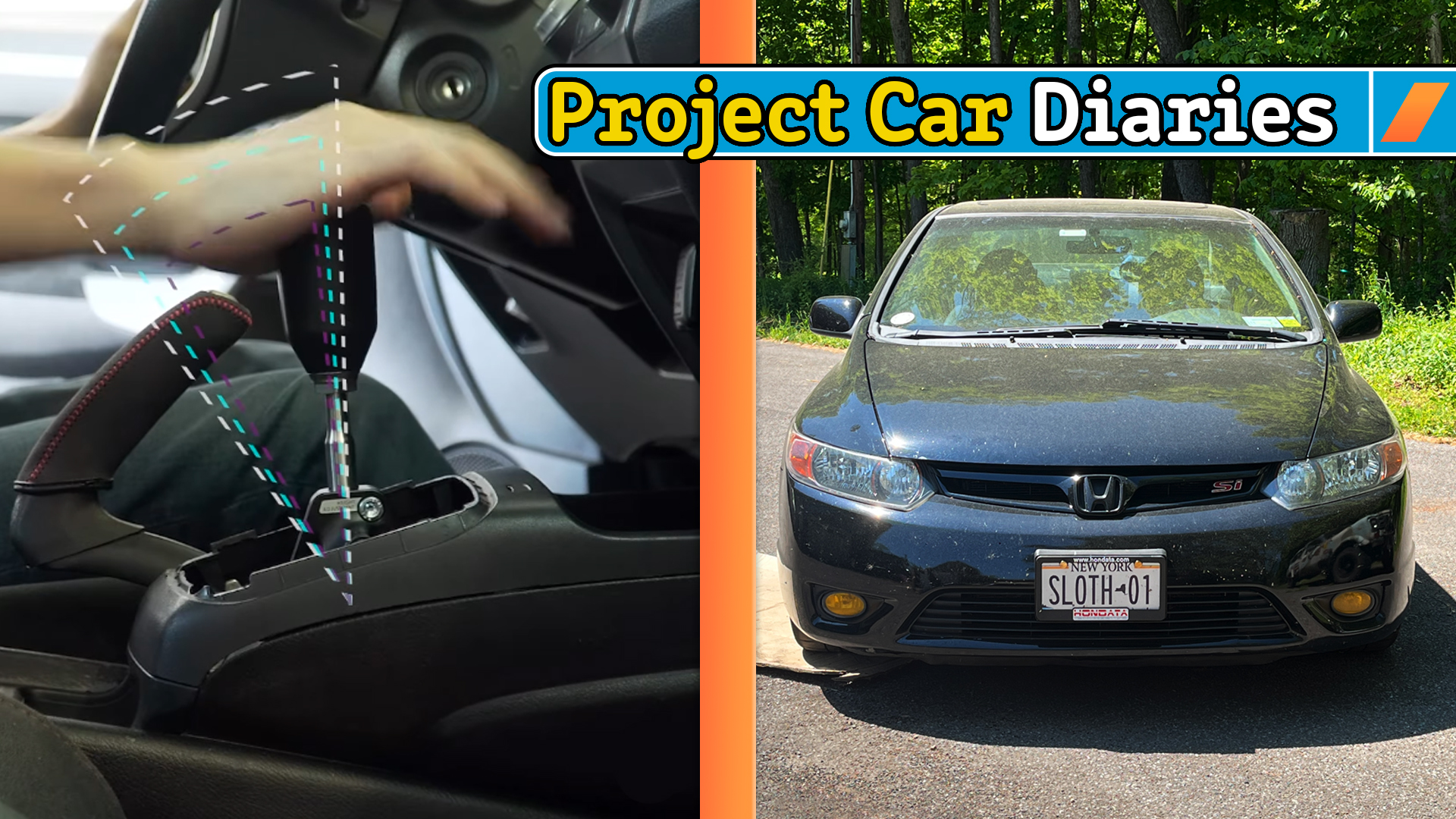

We may earn revenue from the products available on this page and participate in affiliate programs. Learn more ›
Sporty Hondas are celebrated for their manual shift experience. The feel, the throw, the snick-snick-snick—all reasons I bought my Civic Si. So I was surprised to hear Russ Garehan, main man at Honda modding outfit Acuity Instruments, call the shifter a weak point in the eighth-generation Civic. But I swapped my stock unit for Acuity’s three-way adjustable shifter … and it’s not just better, it’s like driving a whole new car.

Project Outline
Acuity sent me a shifter, shifter cable bushings, and a shift knob (and an air freshener, some stickers, and a cute little banana peel charm) for me to write about them, so here we are. I installed the cable bushings first, as this is a cheap and easy mod you can do to enhance shifter feel—we’ll get into this more below. After driving around with that for a bit, I met up with Acuity’s media guy Pawinn in Boston who helped me install the shifter itself. I’ve now been driving with it for about 1,500 miles, testing it at various settings with some different shift knobs, driving casually, spiritedly, and racing autocross. I love it.
Tools and Supplies
- Socket set
- Pliers
- Hex sockets
- Trim removal tools
- Screwdrivers
- Black paint pen
- Rubber mallet
- Vacuum (you may want even more cleaning supplies—I found a french fry lodged in the carpet below my console)
Parts
- Acuity shifter cable bushings (2006) … Important note: The 2006 Civic uses a slightly different-sized bushing than every other eighth-generation Civic. You want this kit if you have a 2007 or newer car. Triple check you’re ordering the right one before you get frustrated trying to install a bushing that’s 1mm off.
- Acuity three-way adjustable performance shifter
- Acuity ESCO shift knob
- Acuity shift boot collar
- EP3 Civic OEM boot
Acuity’s Performance Shifter Development
There’s a little more to a well-engineered short shifter than just lopping a few inches off the lever that your shift knob screws onto. Acuity makes performance shifters for quite a few different Hondas. Product development manager Russ Garehan gave me some insights on why the eighth-generation Civic’s shifter, in particular, took about a year and a half to cook.
“It’s really small, which creates a lot of difficulty in the design process,” Garehan explained to me over the phone. This application “lived in purgatory for a while” while Acuity figured out “how to get it to deliver the throw reduction, but also the nuances to shifting feel that are a little difficult to describe.”
“I don’t think there are a lot of companies out there that try to ruin their products as hard as we do,” Garehan said. This IG clip lets you see what shifter testing looks like:
Garehan went on to articulate that the eighth-gen shifter “has two joints in it … a little unconventional compared to what you feel with a pivot-ball shifter.” Originally he had planned to simply tweak the existing shifter design, pointing out that “the further you deviate from the OEM (factory) design, the more risks you’re taking.” But ultimately the Acuity shifter design had to be made quite differently from the stock Honda unit. “We had to take a leap of faith,” said Garehan. I think it paid off—this thing is magnificent. Not only does it feel great to row through gears with, but it’s also a beautiful piece of industrial design.
Upgrading Shift Cable Bushings Alone Is Worth It
A Civic with a manual transmission (and indeed, many stick-shift cars) changes gears by the lever in the console pulling on two cables. Those cables physically connect to the transmission with little rubber bushings. Replacing those bushings with solid units can make your shifts feel a little stiffer and more snappy.
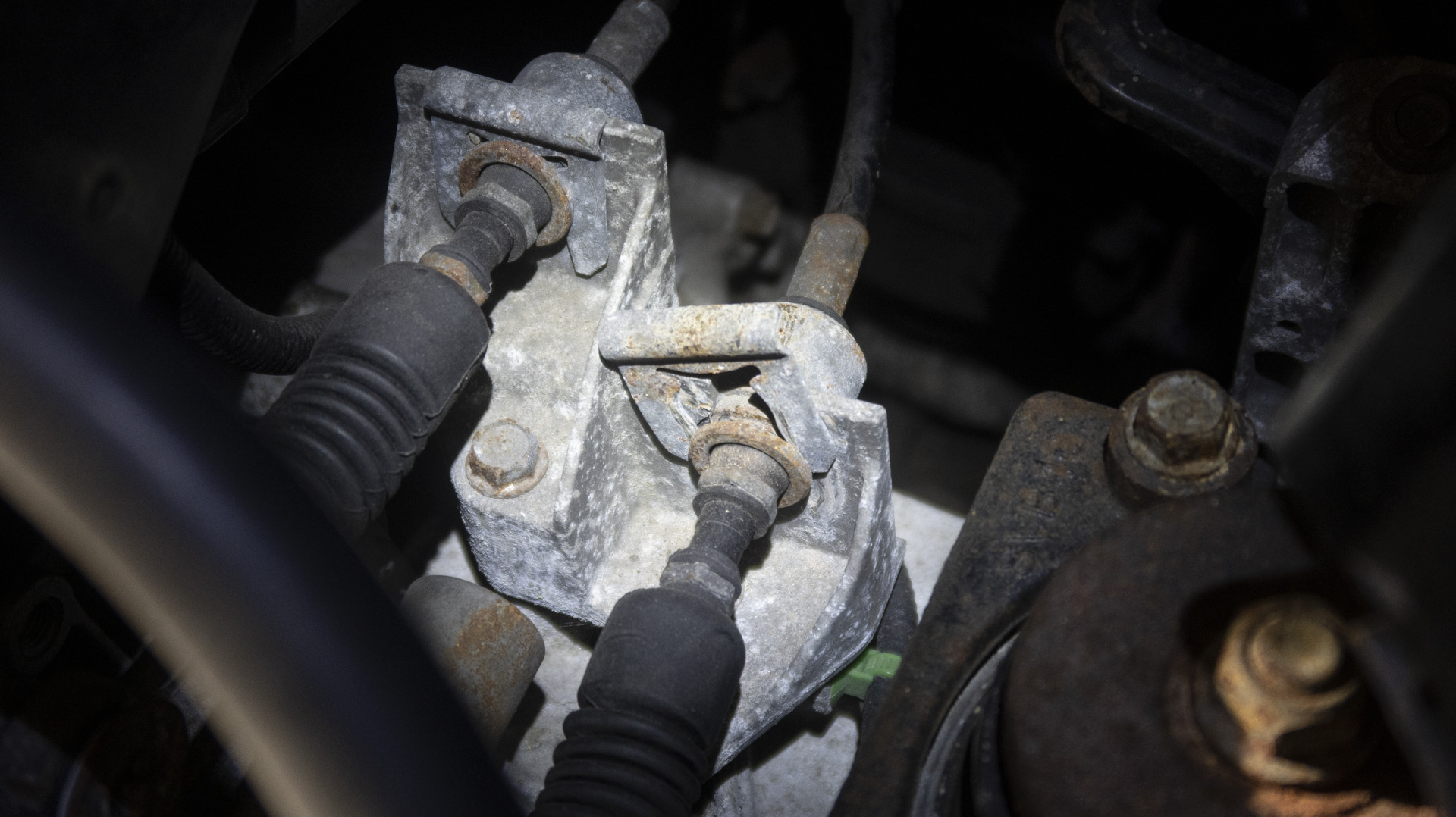
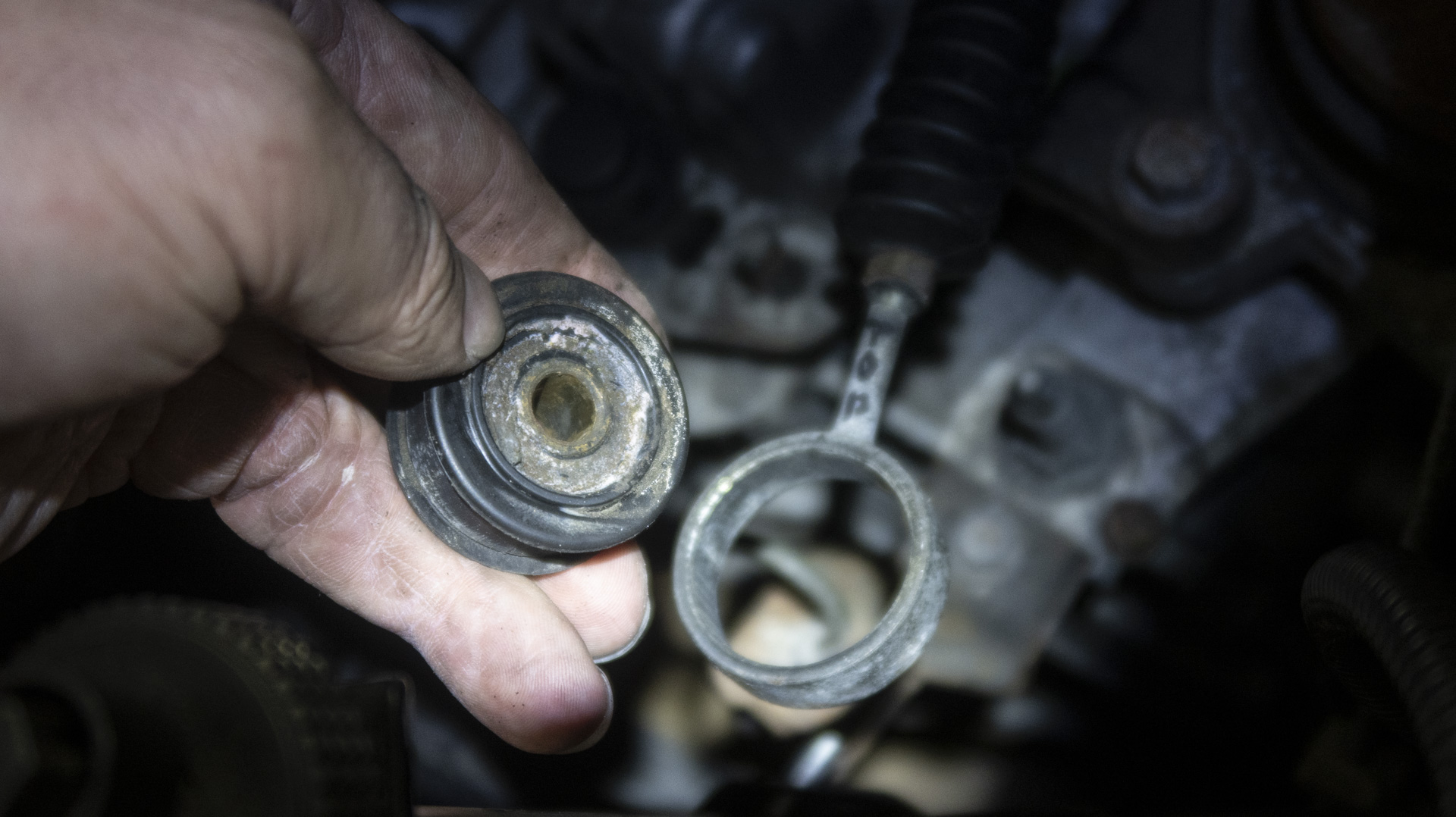
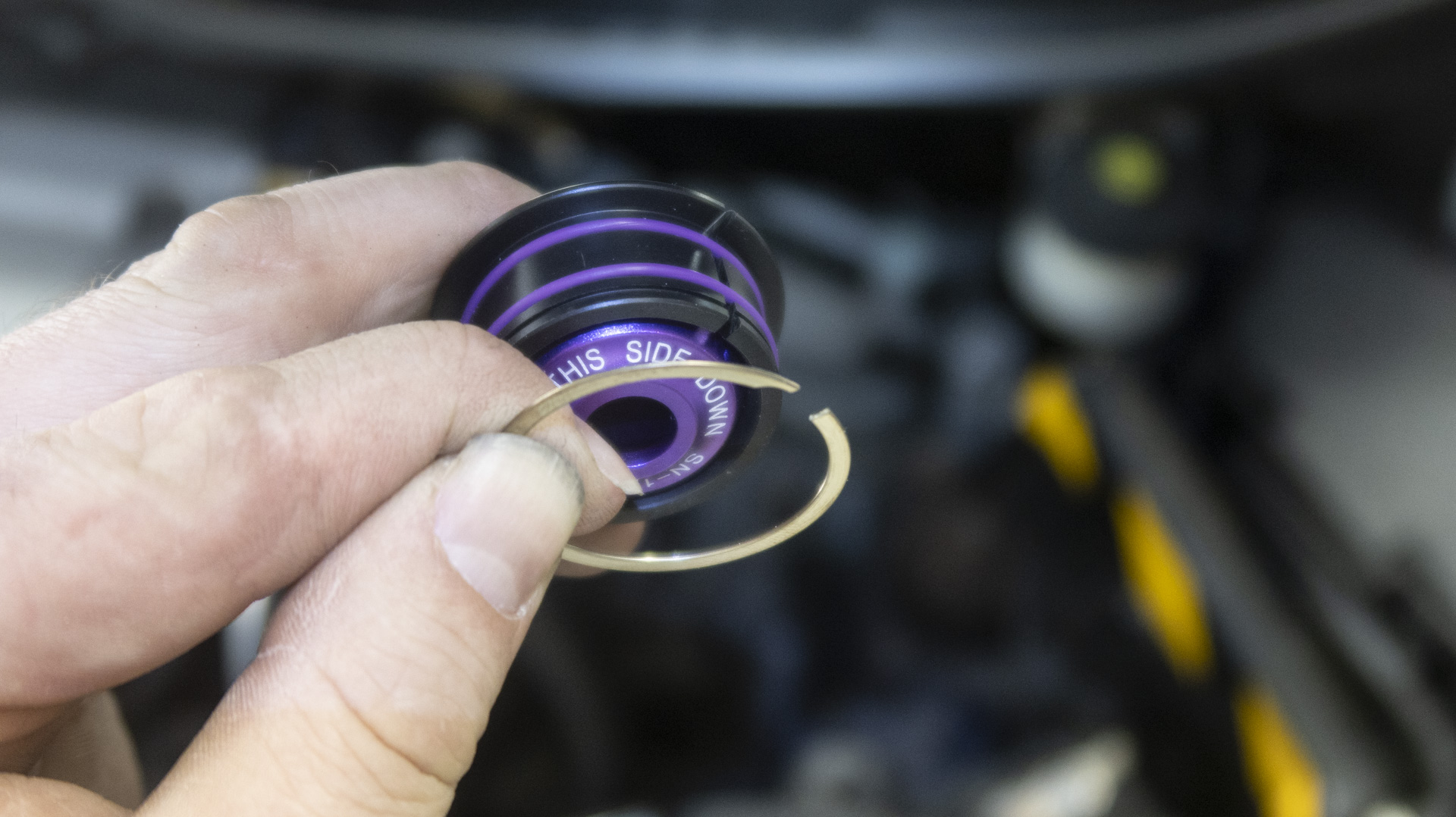
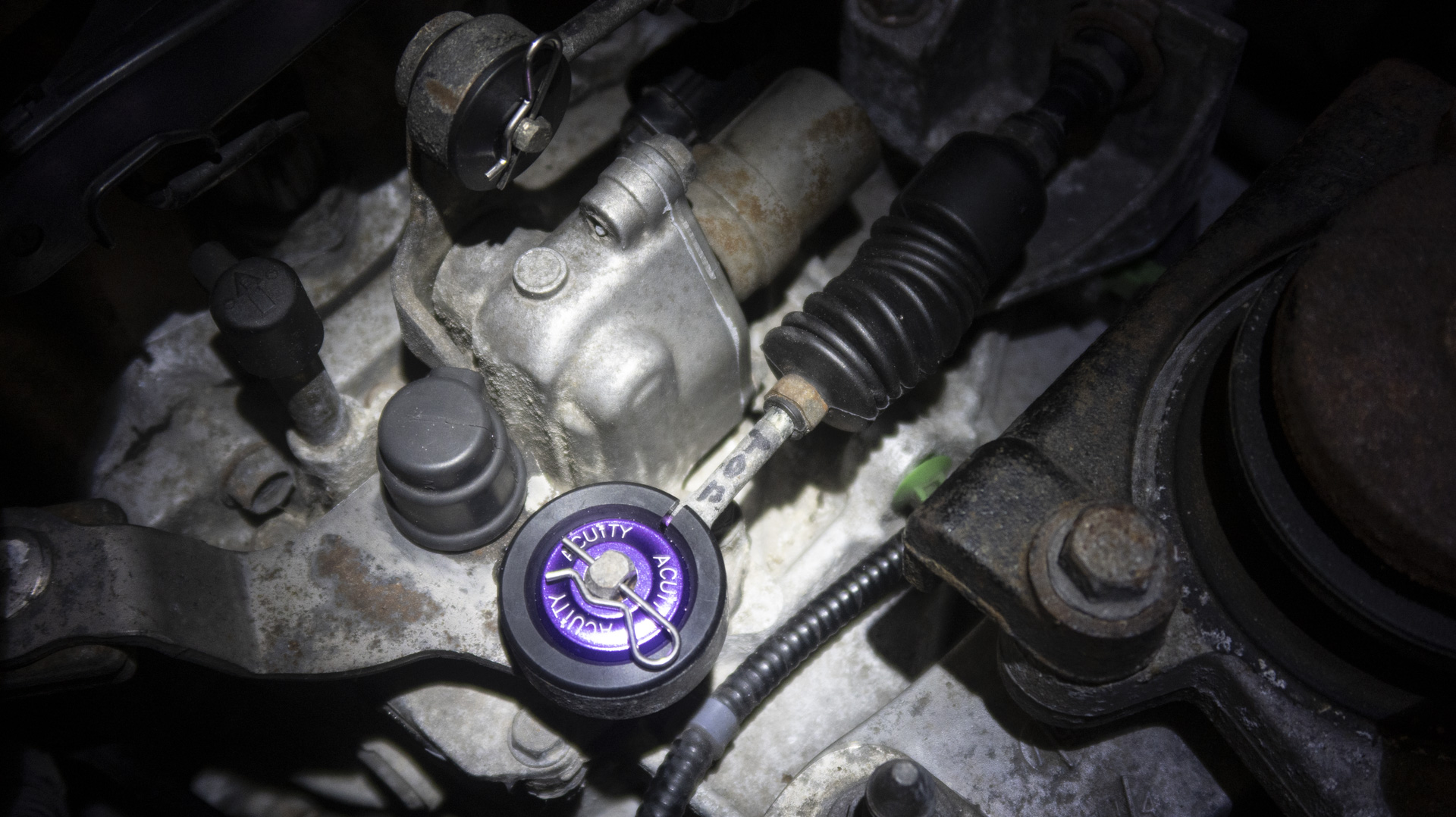
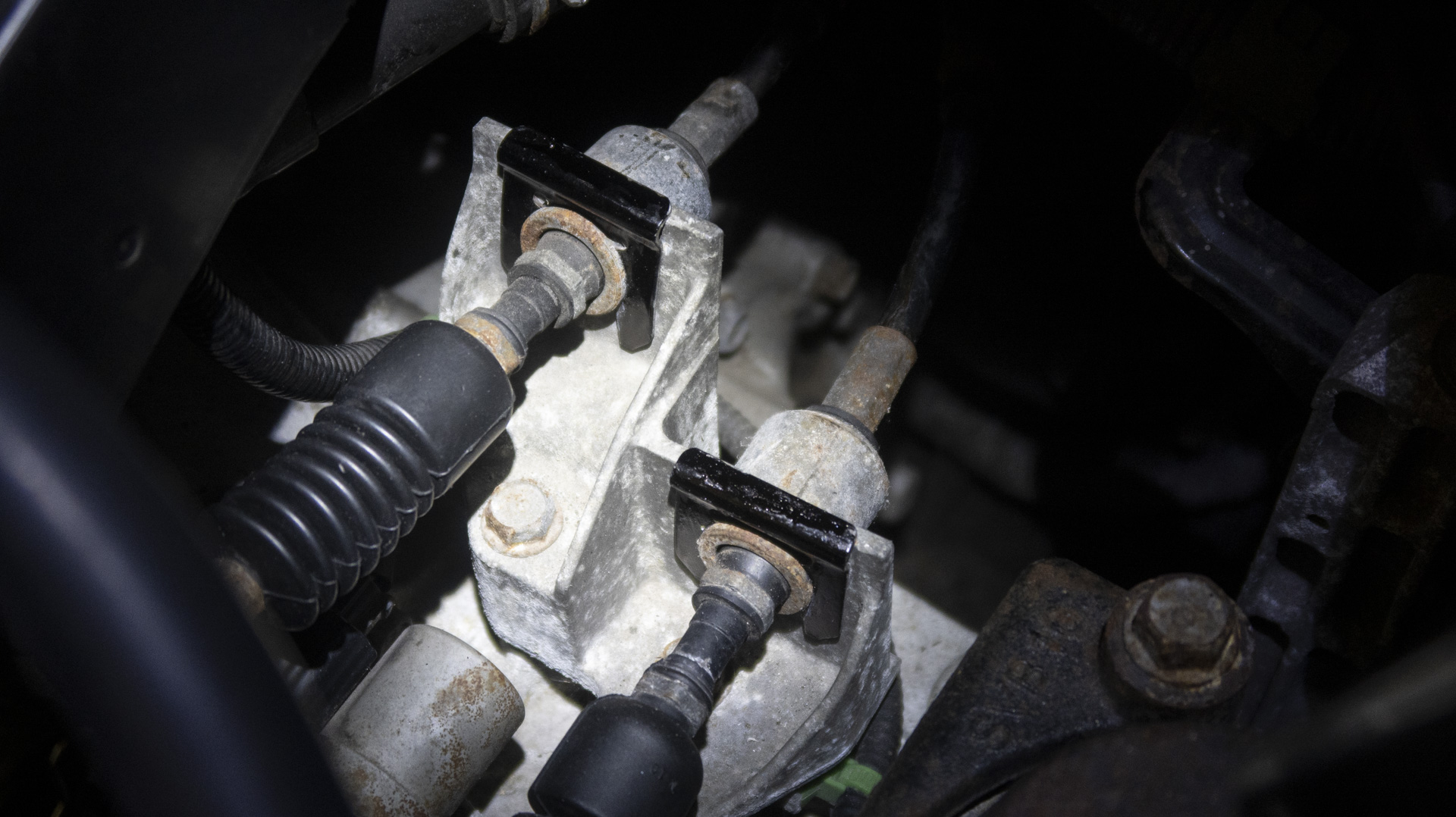
If your car is brand new, I would expect the appreciable results to be minimal. But on my 17-year-old seven-owner Honda, the old rubber bushings were about due for replacement and if you’re modding a car like this yourself, you’re probably on the same page. What I noticed in my car was a slightly more decisive gear engagement at the very end of the shift throw, accompanied by a satisfying little snap sound heard with the windows down. Plus, you get a little purple bling for the engine bay.
Acuity’s online instructions are gorgeously detailed and even though this job is easy, I’d recommend heeding the tips in there, especially in regards to pulling the shifter cables up out of their retaining clips before you pop the old bushing out. Being able to lift the cables higher will make your bushing installation far easier, and matching your pliers’ position exactly to the demo image “FIG 3a” in the manual will get you the leverage you need.
You could also upgrade the shifter base bushings inside the car if you wanted to sharpen up feel a tiny bit without splurging for a whole new shifter, but of course, that won’t get you any adjustability.
Civic Short Shifter Installation Is Easy
Replacing a manual transmission shifter, on many different cars, is not particularly challenging. It’s the disassembling of the center console that’s usually a pain in the ass. Once again, Acuity provides an invaluable service in detailed instructions. The eighth-gen Civic’s console is mercifully simple—just a few screws and well-placed tugs had mine out of the car.

On newer cars, you’re going to have tighter clips and electronics to unplug. Just move slowly, use gentle trim tools, and take pictures to help yourself remember how it all goes back together if you’re worried.
From there, you pretty much just have to click the cables onto their nubs and tighten down the shifter adjustment points. Be advised of torque settings, naturally.
This IG clip gives you a sense of the change in snappiness over the old stock unit:
The Acuity Shifter’s Adjustability Is Awesome
Acuity sells two performance shifters for the eighth-gen Civic (and some other Hondas): a one-way adjustable shifter that lets you pick from a range of lever heights and a three-way adjustable shifter (tested here) that allows you to not only change the height of the knob but also the gear throw and gate spacing. Of course, adjusting the height of the knob effectively alters the throw length. But a cool thing about the three-way adjustment is that you can pair a short throw with a tall height, which kind of makes your machine feel like a rally car.
The adjustability is not only nice for tailoring the shifter feel to your own preferences, but it’s simply fun to mess around with different settings and change your driving experience on a whim.
This IG clip walks you through exactly how the shifter can be adjusted while it’s in the car:
It’s also worth putting some time into the selection of your shift knob. A decade ago, everybody was all about super heavy shift knobs, the idea being that momentum would get you more aggressive gear engagement. Acuity’s ESCO knob is very light and paired really well with this shifter. That said, I’m not crazy about its soft texture and the fact that it’s always a neutral temperature (despite the latter being a big selling point). I have an old Skunk2 knob that’s metal, cold in winter and hot in summer, and immensely heavy at about a pound. I vastly prefer the look of this one, but the shifter doesn’t feel quite as lithe with it one screwed on. I think I’m going to try and source an OEM Civic Type R shift knob in hopes that I can get the classic metal look I like with a lighter feel at the end of the shift lever.
This IG clip gives a clear visual comparison of how the shifter moves in different positions:
Finding The Ultimate Civic Si Shifter Setting
Having run my Acuity shifter in a whole bunch of configurations, I’ve been happiest with the shortest throw setting, narrowest gate setting, and second-tallest knob setting. That combination creates a really satisfying and aggressive shifter feel that makes the car feel special, while also being ergonomically compatible with the way my arm is shaped.
Adjusting it is very easy—you do need to pop the shift boot and top piece of the console off, but then it’s just a quick hex-key twist and you can access any of the three adjustment variables. I simply keep a hex tool in my glovebox, so I can change things up whenever I want.
Acuity Short Shifter: A Super-Satisfying Easy Upgrade
As of this writing, you’re looking at about $500 to buy this three-way shifter and cable bushing combo directly from Acuity. If you have experience working on cars, the installation of both is a breeze. If you don’t, this is still a project you could take on with just patience and a careful study of the instructions. I’m somewhere in the middle and I’d say installing both items is only slightly harder than doing an oil change. Plus, you’ll spend most of your time working in the cabin, which is clean and dry.
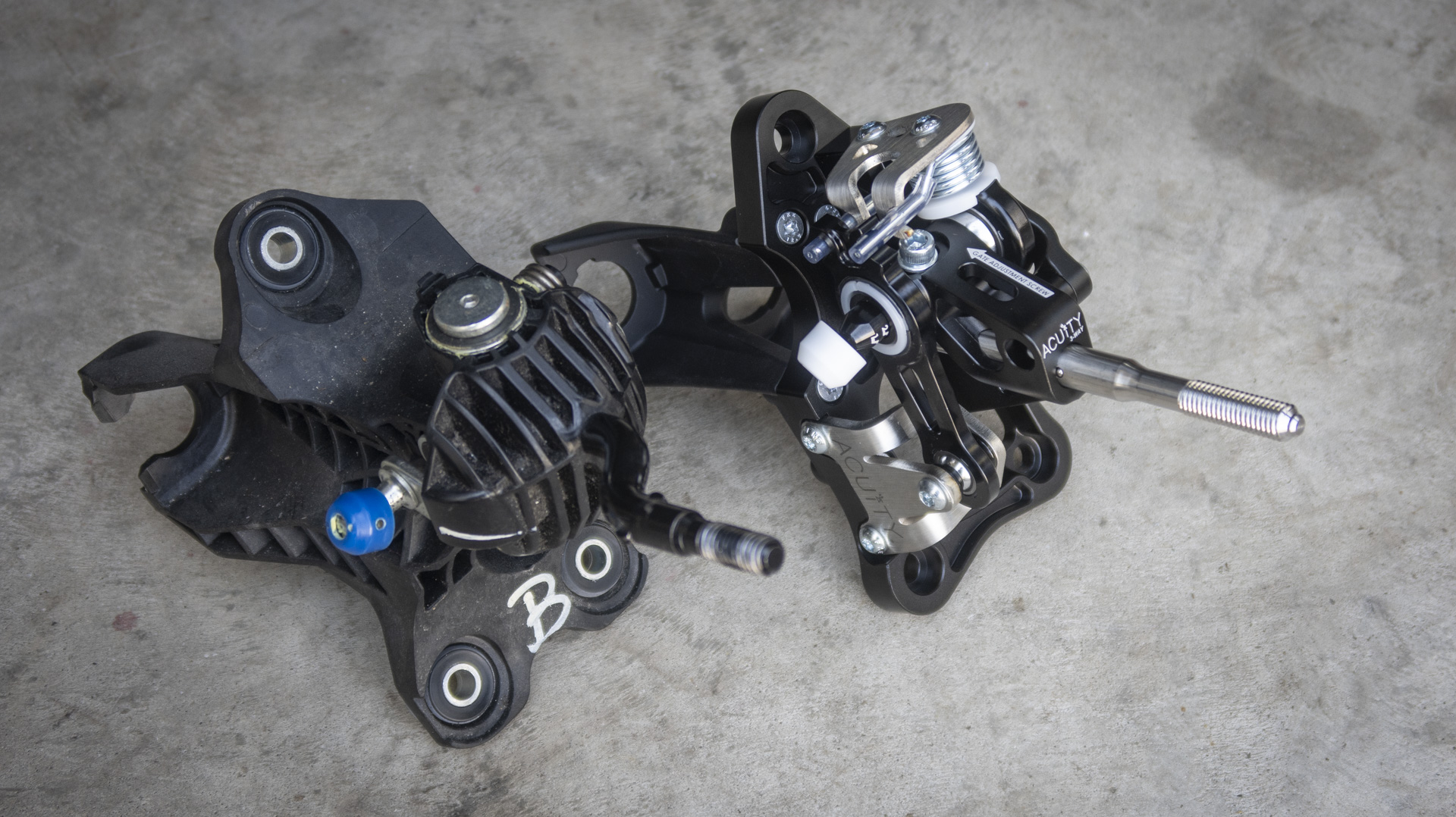
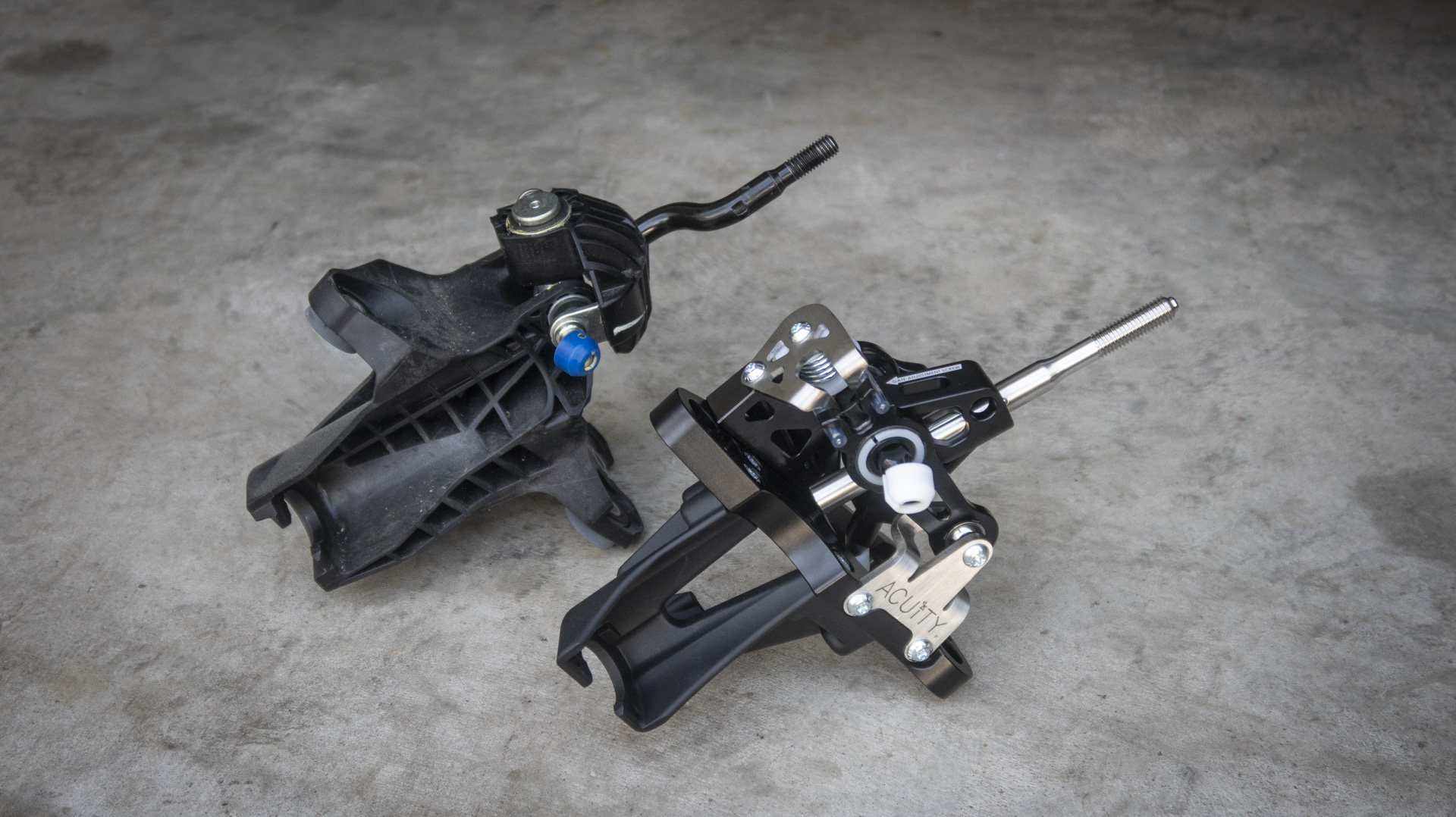
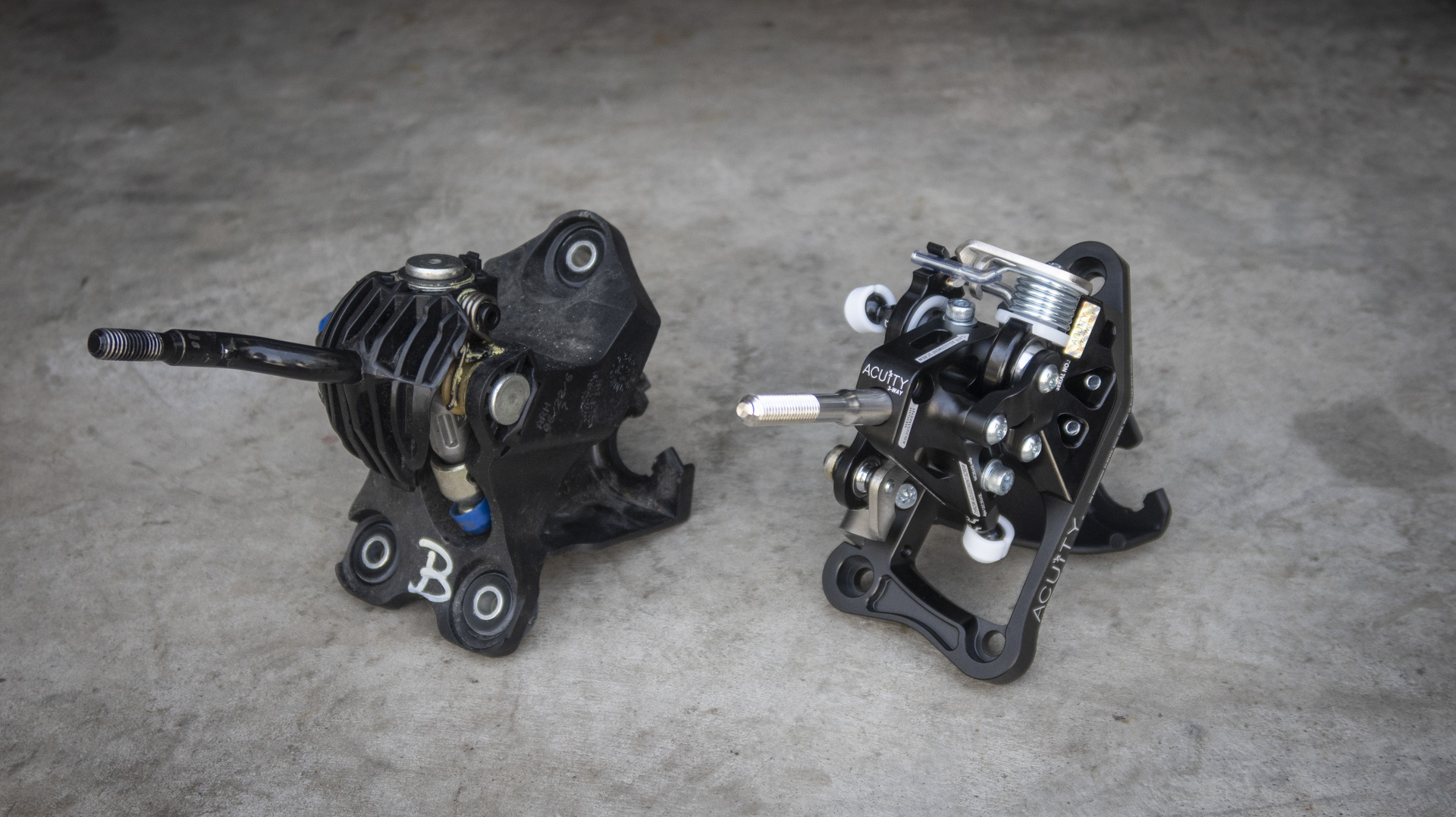
On paper, you can see the performance shifter gets you between gears more quickly thanks to a shorter throw. But the real benefit from this mod, as a driver, is in the feel and feedback of the unit. The Acuity shifter feels so much more decisive and deliberate than the stock unit (which I already liked) that it really goes a long way to elevate the driving experience. It might not actually turn your Honda into some kind of supercar, but it definitely makes it feel more like one and unlocks a lot more joy in every drive.
